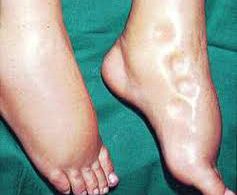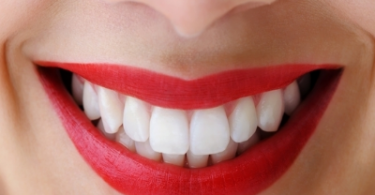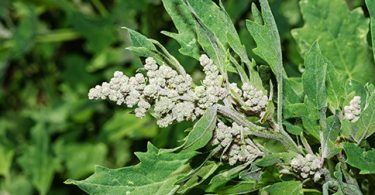Introduction
Headache is probably the most common problem encountered in clinical practice. Its incidence is almost equal, both as a complete solitary symptom (acute or chronic, with well defined individualizing characteristics as regards causation, location, sensation, extension, modalities and concomitants), as well as an accompanying or accessory symptom with some other chief complaints. Whatever the case, homeopathy never views any symptom as a fragment separate from the patient, instead it considers every symptom as a manifestation of the internal discrepancy on the dynamic level that thoroughly and uniformly permeates throughout the patient. This unfathomable truth lies at the root of every case irrespective of its diagnosis or pathogenesis, and is especially confirmed in chronic patients where cure is only possible by taking into account every detail, however unrelated or trivial it may seem in relation to the main complaints of the patient. Though the sickness may appear to localize or confine itself to a certain part or organ, fundamentally it is a morbid affection of the organism as a whole. This is where the miasmatic soil has to be recognized and treated.
Dear readers, this case has been presented due to many reasons.
Firstly, being a one-sided case of long standing, it shows that how pitifully troublesome and unyielding a so called functional disorder proves to be.
Secondly, it depicts the deeper meaning of ‘constitution’, which does not merely denote the summation of mental generals, physical generals or particulars encountered during sickness. We should infact, view it in a wider perspective as being the personality of the patient even when he/she is apparently healthy. It should be kept in mind that when we talk of the ‘essence’ of a case, it is something inherent within the person himself/herself and hence we should not confine our search only to the more obviously abnormal traits or features. Since there can be no ideal standard for absolute health, the physician should not only study the case as a patient but as a person. Remember that a sickness is merely an intensification or surfacing of what was already existent (though latent or hidden) within the vital economy, just waiting for a favorable chance to become apparent.
Thirdly, this case stresses on the fact that though the repertory serves as the most precise and reliable tool for arriving at the simillimum, many times it turns helpless in cases presenting few or incomplete symptoms. This is where the physician learns that the pre-requisites to successful repertorization are correct symptom selection and evaluation, that is one should know the limitations of the repertory! Now when we don’t have a clue as to ‘what to repertorize’, we definitely have to expand our field of observation to the ‘constitution’, in its real and complete sense.
Lastly, this case once again proves the fact that a seemingly local skin disease, on being suppressed, can evolve or mutate itself into the most obstinate and refractory chronic ailment. It also makes us realize the incredibly ramified and notoriously deceptive quality of the miasms, to present themselves in unimaginably diverse, yet inseparably related forms.
Case History
Presenting complaints
Mr AA, a 42 year old upper middle class businessman with a sound economical status, presented with the following:
- Chronic headache for almost 15 years. The pain was vague and ill defined with no particular character. The patient could only describe it as a dull pain all over the head, with no specific modality or time of occurrence.
- His more troublesome complaint however was an idiopathic allergic photosensitivity of the eyes, that had been ailing him for almost 20 years. He could not go out in sunlight without wearing dark sunglasses. Otherwise he suffered from terrible pain, itching and swelling of periocular tissue. To add to his agony, he could not even tolerate the bright artificial light of electric tubes and bulbs, as it too would incite similar symptoms. Hence most of the time he had to put on his sunglasses, which caused him embarrassment in social gatherings or family functions that were held at night. He had consulted a number of eye specialists, undergone numerous ophthalmic examinations and visual tests, but to no avail. Since all the findings were absolutely normal, his complaint was declared to be a functional photosensitivity due to deficient tear secretion (lachrymal gland hypo-activity). He was prescribed a few anti-allergic eye drops that initially helped him to some extent but now even they had turned ineffective.
- He also suffered from ‘weak digestion’ that he attributed to his daily consumption of alcohol in a ‘fixed small’ quantity at night. His stomach was habitually deranged with loose stools in the morning.
History of mode of onset of present complaints
Though the patient was unable to give any significant details, he could only recollect one childhood event. At the age of 10 years he had suffered from a skin eruption on the upper lid of the right eye. The lesion was somewhat raised above the surface, was discoid in shape, with a little bland discharge, just above the lateral canthus extending outwards. The patient could very well remember the intense itching that it caused. After 5-6 months of treatment with local ointments and injections, the eruption finally disappeared.
Past medical history
- Skin lesion (as described above) on right upper eyelid at the age of 10 years.
- Jaundice at the age of 17 years.
- Severe right-sided omodynia (shoulder pain), 2 years back, diagnosed as frozen shoulder. He still has occasional bouts of pain after playing badminton or other similar activities involving abduction and lateral rotation of the shoulder joint. He was given steroids and NSAIDs for this condition.
Family history
- Father passed away at the age of 85 years from coronary vascular disease.
- Mother, 82 years old, is a patient of osteoarthiritis.
- One younger brother has hay fever (allergic rhinitis).
- Paternal aunt is a patient of psoriasis.
- Wife, 40 years old, has been a patient of hypothyroidism and depression for 10 years.
History of previous medication
The patient has always resorted to allopathy for various health problems. Only recently, for about 1 year, he has been under the treatment of a homeopath for his headache and photosensitivity. His prescription card shows Sulphur, Gelsemium sempervirens, Euphrasia officinalis eye drops, Nux vomica and Phosphorus in various potencies. The patient says that he has not got even the slightest relief from any of these.
Personal history
- Appetite : Normal
- Thirst : Normal
- Stool : Usually loose in morning
- Urine : Normal
- Sweat : Normal
- Sleep : Normal, usually on back
- Dreams : Very infrequent and not remembered
- Cravings : Alcohol
- Thermal Reaction : Though chilly, he prefers winters
- No specific modality regarding any particular time feels the same all twenty four hours.
- No specific desires or aversions in terms of food.
Mental / Emotional generals
As elicited by the patient in his own words on interrogation
‘I am a company person, fond of parties, etc. I care for my family and try my best to provide them all the luxuries of life, yet during the exacerbation of my health problems I don’t like anyone. It irritates me when they repeatedly ask about my wellbeing. My upbringing has been balanced, my parents were not very strict nor did they impose any demands on me academically. That’s what I do with my two sons. I don’t care about money expenditures as God has blessed me with abundant resources, my business is running prosperously though at times I grow a bit concerned about it when I get sick. I love playing badminton. I am basically an adventurous person, fond of latest gadgets, especially mobile phones. My only worry is about my wife and her depression. I try a lot to make her happy, fulfill all her demands, never ask her to give any account of expenditures, regularly take my family on outings. Recently we went to Singapore, but still when she doesn’t seem cheerful, I wonder: ‘What else can I do for her?’ and then I get annoyed. She has no scarcity of clothes nor jewellery – I presented her a diamond set on her birthday. But even then she is not content. Doctors say that she is a patient of depression but I know that she is merely hypersensitive. She thinks that she is being neglected by me and my family. How do I tell her that this is her delusion and cannot be treated by any doctor.’
Observations made by the physician during case taking
During the entire conversation, from the entry till exit, the patient had an aura of confidence bordering on conceit. Though polite verbally, the patient emitted a sense of superiority. On several occasions he referred to his financial resources, his carefree attitude regarding money matters, etc. When asked about previous treatment, he frowned (this he did several times) and then proudly gave a detailed account of how much money he had spent on various tests. He also declared that most of the doctors were incompetent and while referring to his earlier physicians did not even address them as Dr X, just called them by their names. Now, when I enquired about why he resorted to homeopathy, he frankly admitted that though he did not have much faith, it was better to try something and then form any opinion. When talking about his wife he seemed sentimentally detached, his efforts to boost her spirits merely revolved around material possessions. When the physician suggested that it might be possible that his wife desired emotional fulfillment rather than money, he said with a grin: ‘Oh Doctor, this is a general problem of females. They want all luxuries of life but when they are provided, they want something else. They are not practical, after all we husbands have so many responsibilities. Now either we can earn or we can pamper our wives, and let me know the criteria of emotional fulfilment. If a husband is unfaithful, I can understand, but what to do if this is not the case and still she is depressed?’ While talking, it seemed as if he was on a mission to prove his point at any cost. He was also amused at the long case taking, especially when asked about his personality and nature. He tried to disguise his suspicion under a contemptuous grin and said: ‘Is this really necessary for my treatment?’ But on being explained, he co-operated well.
Physical examination
General appearance and build : Confident and relaxed look, fair wheatish complexion, tall and strong build with fat deposition on abdomen
- Blood pressure : 140/84 mm Hg
- Pulse rate : 80 per min
- Respiration : 14 per min, with occasional deep sighs
- Temperature : Afebrile
General systemic examination did not reveal anything abnormal.
Local examination
There was puffiness around the eyes with congestion of the conjunctiva. The eyes gave a tired look, the patient complained of a sticky feeling and discomforting dryness of the eyes.
Investigations
All previous reports revealed nothing significant. CT scan, Fundus examination, Refractrometry, Optometry and other ophthalmic tests were perfectly normal.
Disease diagnosis
Chronic headache with idiopathic allergic ophthalmic photosensitivity.
Miasmatic diagnosis
- The skin eruption that was suppressed had marked itching without much discharge, which shows its PSORIC nature. Deficient tear formation and hypersensitivity to light are again both PSORIC manifestations.
- Family history also reveals a strong PSORIC influence as both parents show a fair longevity. Coronary vascular disease of the father shows a syphilitic component, the aunt’s psoriasis depicts a multi-miasmatic confluence, and the brother’s hay fever has both psora-sycosis at its root.
- Mentally, the air of pride, liking for latest gadgets, adventurous and sporty nature, aspirations to live a stylish and luxurious life, tendency to show off especially repeated assertions regarding one’s wealth, extrovert criticism of others, desire for parties, social and communicative nature… All these very obviously denote SYCOSIS.
Hence we need a remedy that covers psora and sycosis, the former active on the physical plane and the latter on the mental plane.
Result and first prescription (remedy and potency)
The closest contest was between Sulphur, Nux vomica and Lycopodium clavatum. As the patient had already been prescribed the first two medicines in various potencies by his previous homeopath, the battle was won by the third.
Repertorial totality (Synthesis 8.1)
| Mind | Affectation; Boaster, rich wishes to be considered; Company desire for, aversion to solitude; Contemptuous; Cynical; Delusion, wealth of; Dipsomania, alcoholism; Egotism, self- esteem; Frown, disposed to; Haughty; Insolence; Irritability, sickness during; Pompous, important; Presumptuous; Reproaches others; Rudeness; Vanity |
| Skin | Eruptions suppressed |
| Eye | Dryness, photophobia |
| Generals | Food and drinks; alcoholic drinks, desire |
To be honest, here I would like to state that after case taking and prior to repertorisation, I somehow felt that the selection should be Lycopodium. It was not an intuition or prejudice, instead it was the ‘impression or essence’ of the patient’s personality, deduced from its similarity to the medicine as described in the materia medica. It also covers all the three miasms. Still, until you have a positive response, it is better to keep your fingers crossed. The best thing you can do is to justify your decision to yourself. As regards potency, since the prescription was primarily on finer psychological traits of the patient, it was suitable to use a medium or higher potency. However, to avoid any ill consequences, the safest option was chosen to start with.
Hence, on 5 March, 2007, Lycopodium 200C was prescribed (4 doses, BD for two days, followed by Placebo for 20 days).
Follow up
23 April, 2007 : No relief in headache and eye complaints, but his shoulder pain was almost gone and he didn’t feel the need to take any pain killers (unsurprising as Lycopodium can cure both frozen shoulder and frozen emotions). Placebo for 1week.
2 May, 2007 : No change. Lycopodium 1M prescribed (2 doses to be taken on consecutive nights; Placebo for 20 days).
25 May, 2007 : Patient entered the chamber without his customary black spectacles that had been indispensable for him for 20 years!! In his words, a few days after taking the medicine his headache was considerably relieved. Encouraged by this, he tried to test whether there was any change in his eye problem. He observed that now he could tolerate the artificial lights well and there was no need to wear the lenses at night. He could also tolerate sunlight for a few hours, though not during very bright sunny days. Placebo for 15 days.
15th June, 2007 : Condition standstill as on previous visit. Lycopodium 10M, single dose on tongue; Placebo for 15 days.
5 July, 2007 : Much improvement, the patient was almost free from his complaints, only very occasionally did he need to put on his lenses and no longer suffered from exposure symptoms. Placebo was given for 1 month.
20 September, 2007 : Has been free from his complaints, saying that he is 90 per cent better. For the past few days he has noticed an eruption on the same site as when he was 10 years old, but itching is not so troublesome as it was at that time. Placebo for 15 days.
10 October, 2007 : Eruption went off by itself. Placebo for 1 month. The case was bi-monthly reviewed and only once did the symptoms return slightly for which Lycopodium 50M was given. To date the patient has been free from his symptoms.
Discussion
This demonstrates that though a case may lack definite modalities, sensations, etc, and symptoms may be incomplete, we should not stop hunting for individualizing features. Just ask yourself: ‘Would my prescription have been the same, if the patient had presented with some other symptom or diagnosis?’ Dear readers, I don’t mean that location or other features are not important, that we definitely need to make a diagnosis and every medicine has its unique organ affinity or sphere of action. But what do you do in cases as above, where the headache is poorly defined and you just have a functional hypersensitivity? In the repertory, we find a number of medicines under the rubrics – ‘Photophobia’ and ‘Light aggravates’. It is here where all depends on the extent to which we are conversant with the finer psychic shadings of our medicines, especially polychrests.
Isn’t it better to trust a well known and completely proven polychrest than to rely on a small, ill proved drug? Though the choice may vary from physician to physician, the result is either success or failure. Is that not the case?
Author: Dr Shraddha Pathak





